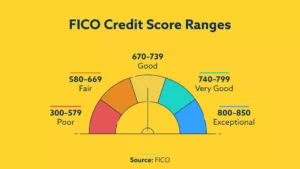Go directly to the source (the creditor) to dispute inaccurate credit report items.
In June of 2009, rules were passed that made it possible to dispute inaccurate credit information directly with the the creditor.
You have a right to dispute the accuracy of information on your credit report with the company that reported the information to the credit credit bureaus.
Go directly to the source — the creditor.
Under the Direct Dispute Rule, companies that “furnish” information to the credit bureaus such as a bank, credit card issuer, lender, debt collector or loan servicer must investigate disputes by consumers.
You have a right to dispute the accuracy of information on your credit report with the company that reported the information. If you send a letter disputing such information, the company that provided the information to a consumer reporting agency (including original creditors and debt collectors) must investigate.
How the Direct Dispute Rule Works
Consumers have the power to dispute directly with the creditors that report to the credit bureaus rather than using the dispute process with the credit bureaus. Formerly, creditors were only required to respond directly to the credit bureaus after the consumer submitted a credit dispute. Oftentimes no investigation was conducted addressing the consumer’s dispute.
With the direct dispute rule, creditors will not be able to solely rely upon the E-Oscar method of handling credit disputes. The E-Oscar method is where most credit disputes are reduced to a numerical code through an automated electronic dispute system. With the E-Oscar automated system a consumer may submit supporting documentation as proof but that proof is never reviewed or considered. Creditors have a duty to investigate disputes.
Creditor’s Duty to Investigate
Companies furnishing about your account to the credit bureaus must respond to disputes submitted to them by consumers in the same time frame that applies when you send a dispute letter to the credit bureaus. An investigation must be completed within 30 days.
The dispute must be verified as accurate, corrected or deleted from the credit reports. The rule also forces the furnisher of information to review all documentation and proof the consumer submits along with their dispute.
In some instances the investigation can be extended up to 45 days if you send additional information during this period. Once the investigation is completed, the creditor must inform you of the results within five business days of completion.
Purpose of the Direct Dispute Rule
The accuracy of the information the furnisher provides to the credit bureau must reflect the terms of liability of the account, the consumer’s performance regarding the account and whether or not information identifies the appropriate consumer.
The rule encourages creditors to supply correct and accurate information of a consumer’s borrowing history to the credit bureaus. Essentially that means correct amounts, dates and payment history.
The integrity of the information provided by the furnisher must be substantiated by the furnisher’s records and furnished in a way which minimizes the likelihood the information could be incorrectly reflected in a consumer’s credit report.
What this law really means to the consumer
Previously consumers could dispute information directly with the creditors, however the creditor or furnisher of information was under no requirement to respond. Under the Direct Dispute Rule original creditors must respond within 30 days just like the credit bureaus.
If the furnisher has not verified or corrected the information within 30 days, the item must be deleted. Direct Disputes should always be sent to the original credit via certified mail, return receipt. This is your proof they are in receipt of the direct dispute.
There may be a chance an original creditor has not maintained your records after 18 months of a charge-off, inactivity or account closure. This can work to your advantage as the original creditor may not be able to back up their negative reporting.
Some original creditors may not have any records at all as accounts age. During recent years there have been numerous bank mergers and consolidations, often consumer records do not get transferred in their entirety.
Steps to dispute directly with the creditor
- Use the correct address. If the creditor (or debt collector) specifies a particular address for receiving disputes, you must send your dispute letter to that address.
- Write your dispute letter stating what you believe to be inaccurate.
- Request deletion of the inaccurate information. The creditor is not obligated to delete the information they can simply correct inaccurate information but always request deletion.
- Attach your proof, if you have it, as to why the account is reporting inaccurately.
- After mailing the dispute wait 30 days for the creditor to complete its investigation.
Here is what the furnishers of information (creditors) are required to do
- Conduct a reasonable investigation
- Review all relevant information provided by the consumer
- Report results to the consumer, generally within 30 days
- Notify each CRA to which you provided inaccurate information if the investigation finds the information was inaccurate. Furnisher Rule 660.4(e)
Because data furnishers are required by law to fully investigate any dispute a consumer brings, they could face regulatory action from the Consumer Financial Protection Bureau for not complying.

















